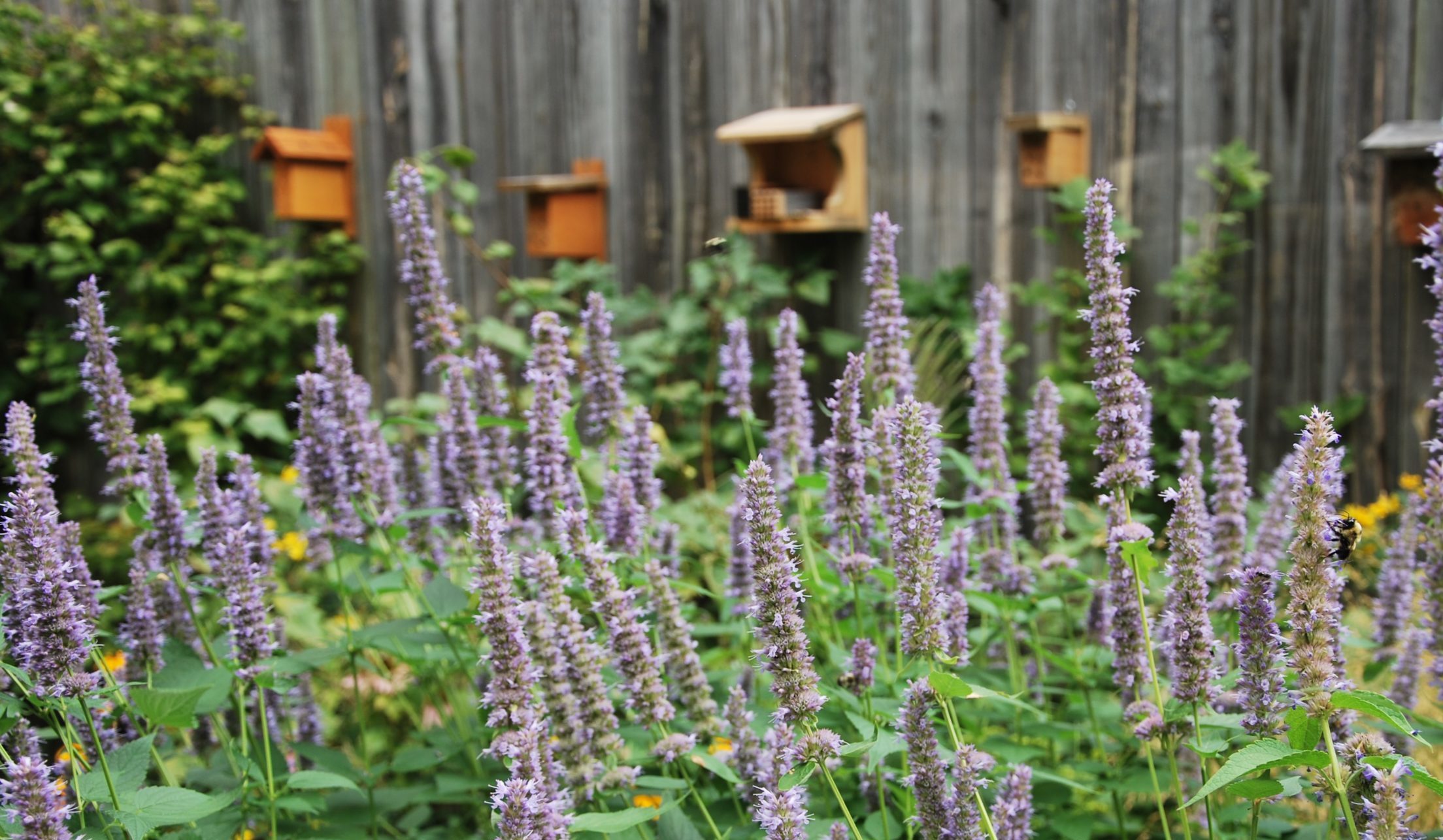- Manitoba
Best Practices and Innovation
Ecosystem Services
Education and Awareness
Green Infrastructure, Habitats and Connectivity
Soil
Species Diversity and Conservation
Water
- Michele Kading
- Wilma Sotas

Explore Biopolis projects and discover how citizens, researchers, institutions, businesses and community organizations are supporting biodiversity in cities across Southern Québec.
The projects listed on Biopolis are diverse and a source of inspiration for all. They were selected according to their objectives to enhance and preserve urban biodiversity in cities across Southern Québec. Explore our featured projects to discover how citizens, researchers, institutions, businesses and community organizations are working to support urban biodiversity.
The rain garden is designed to collect storm water runoff from the roof and parking lot of the Great Canadian Superstore on St. Anne’s Road in Winnipeg, with a catchment size of 9860 square meters (2.4 acres). The garden was initially planted with 670 native plants of 58 different species, covering an area of 460 square meters. The plants and soil act as a natural filtration system, removing pollution and contaminants from the water. The water then drains through an underground pipe to the Seine River, providing clean water downstream. Since the initial planting, the rain garden has continued to be maintained and supplemented with additional plantings.
The Seine River Greenspace Enhancement Project includes several initiatives focused on connecting people with the Seine River as well as enhancing natural habitats. As Winnipeg grows, so too does the use of its remaining natural spaces. While it’s wonderful that people are spending time in nature, the increasing human activity is eroding riverbanks, damaging sensitive vegetation, and degrading upland habitats. This project aims to enhance the use and appreciation of the Seine River Greenway while protecting its natural spaces.
This project aims to:
The accessible dock will be the first of its kind in Winnipeg. While more funding is still needed, the goal is to install a dock that will be usable by a variety of people with a range of abilities, ages and sizes. Project partners: The City of Winnipeg and Scatliff+Miller+Murray.
SOS Landcare is an initiative seeking to restore areas overrun by invasive (non-native) plants and encourage the growth of wildflowers native to the area. Landcare volunteers also clear winter garbage, plant shrubs and trees, clear storm damage on the paths, and become the local eyes for the river and land.
Use of phytoremediation to rehabilitate former industrial sites in eastern Montreal – IRBV – Université de Montréal
This project is conducted by the Institut de recherche en biologie végétale (IRBV) with the financial support of the Service du développement économique de la Ville de Montréal and the Green Municipal Fund of the Federation of Canadian Municipalities and close collaboration with the managers and citizens of the Borough of Rivière-des-Prairies – Pointe-aux-Trembles. The objective is to use phytoremediation to rehabilitate contaminated sites and to restore their ecological integrity while producing biomass that may be positively repurposed. The project adheres to a phytomanagement strategy that agrees with the principles of industrial ecology and that promotes sustainable influx management of matter and energy, where refuse from a specific industry becomes a resource for another. Thus, biomass of plants used for soil decontamination may be used to fuel composting and other bioproduct plants.
Do soil fungal communities facilitate invasion of temperate forests by the Norway Maple? – Dawson College – Concordia University – UQAM
The invasion of exotic plant species is a global phenomenon which is significantly altering native plant diversity and ecosystem function. However, the underlying mechanisms by which some introduced, exotic species successfully spread and displace native species remain poorly understood and the consequences of these invasions on the below-ground components of native communities are largely unknown.
Plants in terrestrial ecosystems have evolved in direct and indirect contact with a multitude of soil organisms and the interactions between plants and soil microbes strongly influence both plant and soil community composition and ecosystem processes. As such, the balance of these plant-microbe interactions can play an influential role in mediating the success of plant invasions. In particular, the mutualistsic symbiotic mycorrhizal fungi can play an influential role in the invasion of introduced species.
The Norway Maple is perhaps the most invasive species of trees found in the Province of Québec and is reducing species diversity in invaded areas and is inhibiting the growth of the native Sugar Maple. Both Sugar and Norway maple form symbiotic relationships with arbuscular mycorrhizal fungi (AMF), yet we do not know whether invasive and native maples benefit from associations with AMF in the same ways or to the same extent. Also, there have been no field studies comparing the AMF communities in the roots of the Norway Maple and native maple species in Québec.
Therefore, the aims of this study are to: assess the environmental determinants of the AMF community structure in Sugar Maple and Norway Maple; compare the species composition and colonization rate of AMF communities in native and invasive species of Maple using cutting-edge molecular approach (i.e., genomics) and test whether AMF and soil fungal communities equally affect the growth of native and invasive species using greenhouse experiments.
The Saint-Michel Environmental Complex (CESM) is an immense 192-hectare site in the heart of the Villeray-Saint-Michel-Parc-Extension borough. This site, once home to the Miron limestone quarry, was converted in 1968 into a giant landfill of 75 hectares. Eventually acquired in 1984 by the City of Montreal, their goal was to turn it into a vast environmental technology and education complex surrounded by green space, helping to improve the cultural and recreational life of the area.
Today it has become the second largest green space in Montreal, after Mount Royal Park. This is one of the most ambitious environmental restoration projects ever undertaken in a North American urban area.
Help protect threatened species and their habitats.